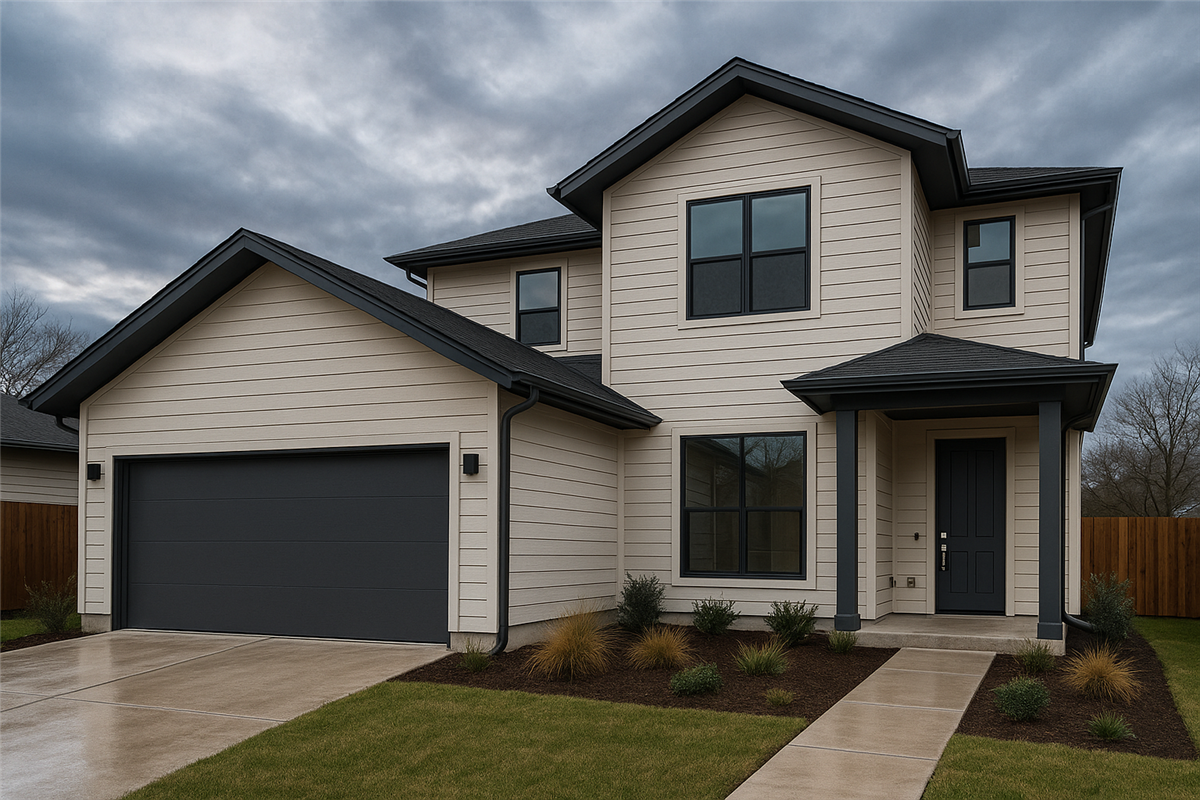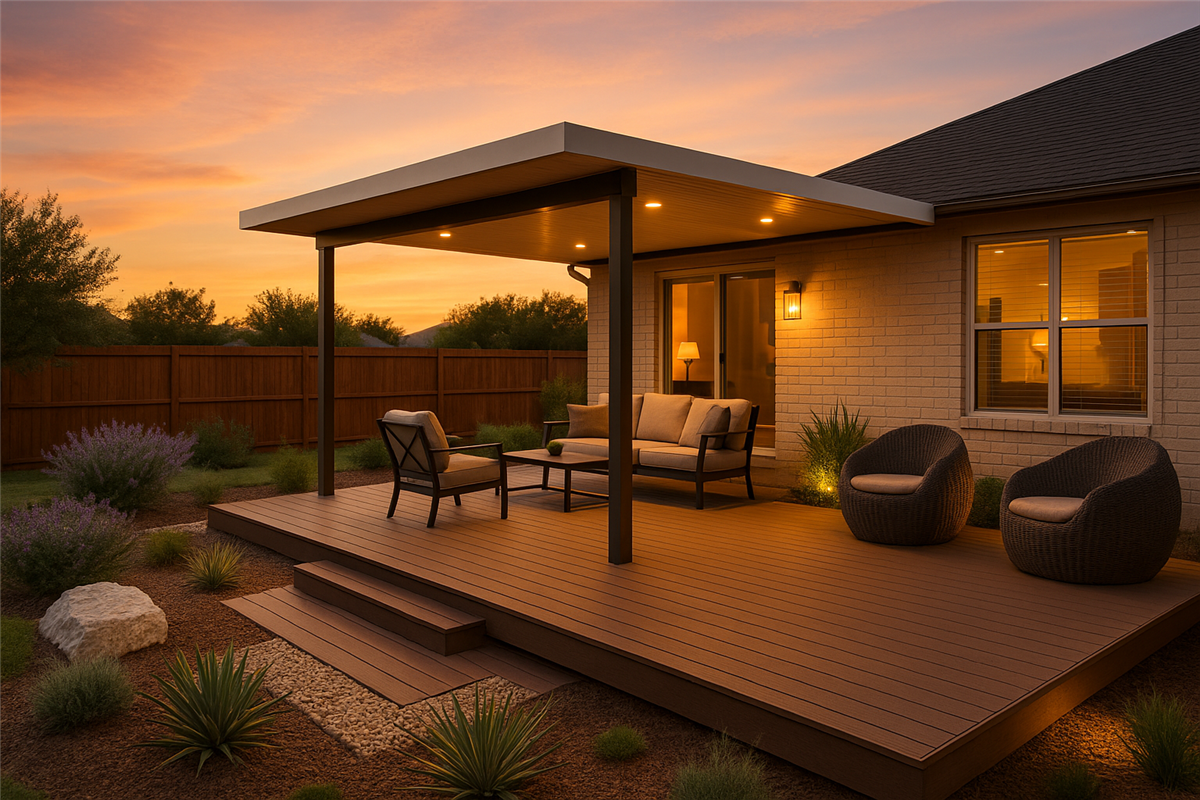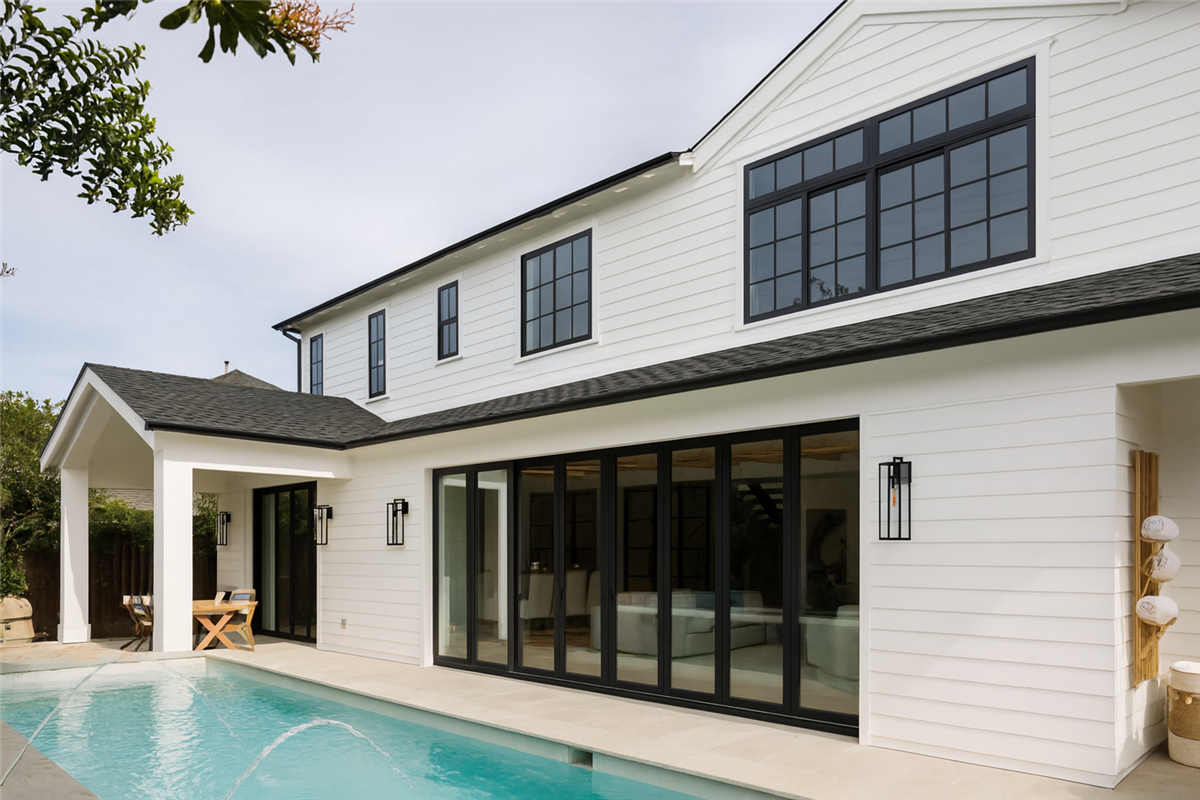Imagine the transformation of a caterpillar into a butterfly: an incredible metamorphosis that results in a beautiful and durable creature. Similarly, installing siding on your home can bring about a stunning metamorphosis - enhancing its curb appeal, increasing its value, and providing long-lasting protection from the elements. In this article, we will delve into the top benefits of siding installation, unveiling how this investment is akin to encasing your home with armor without sacrificing beauty or elegance. Are you ready to discover the secret to achieving ultimate home protection while turning heads with your property's aesthetic allure? Read on!
Benefits of Installing Siding
When it comes to protecting your home from harsh weather elements and enhancing its curb appeal, installing siding is a smart investment. The benefits of investing in siding go beyond just aesthetics and curb appeal. Let's take a closer look at some of the top benefits of installing siding on your home.
Siding Protects Your Home from Harsh Weather Elements
One of the most significant benefits of installing siding on your home is that it protects your home from harsh weather elements such as rain, snow, and winds. Without siding, these elements can penetrate your walls and cause damage to the interior of your home, resulting in costly repairs.
Siding Improves Your Home's Energy Efficiency
Installing siding on your home can also improve its energy efficiency by reducing the amount of energy required to heat or cool your home. This is because the siding acts as a barrier that keeps cold air out during winter and hot air out during summer. As a result, you'll save money on your energy bills over time.
Siding Increases Your Home's Longevity
Think of siding as a protective envelope that surrounds your home, shielding it from various environmental factors such as rain, wind, and snow. By protecting your home from moisture damage, which causes mold and rotting issues, siding significantly increases the lifespan of your property.
Curb Appeal Boosts Property Value
Siding plays an essential role in boosting your home's curb appeal, which translates into increased property value. Homes with attractive sidings have higher chances of attracting potential buyers and possibly selling faster than those without them.
- According to a 2019 study conducted by Hanley Wood's Remodeling Magazine, installing new siding can result in an average of 75-80% return on investment (ROI) when it's time to sell your home.
- The Department of Energy states that adding insulation-enhanced siding can help reduce a home's heating and cooling costs by up to 20%.
- A 2017 survey conducted by the National Association of Realtors found that replacing old siding with new materials can increase a home's perceived value by as much as 10%.
- Investing in siding for your home is a smart decision as it provides multiple benefits beyond just enhancing its curb appeal. By acting as a protective barrier against harsh weather elements, siding helps prevent costly repairs and increases the longevity of your property. Siding also plays a crucial role in improving energy efficiency, saving you money on energy bills over time. Finally, an attractive siding boosts curb appeal, which translates into an increased property value and higher chances of attracting potential buyers.
Enhanced Home Protection
Your home is a massive investment that needs protection against different external factors such as climatic conditions, extreme temperatures (hot or cold), fires, and insects. Here are some ways in which siding enhances home protection.
Siding Is Waterproof
Siding is waterproof, helping to protect your home from water damage that can cause serious structural issues and mold problems. It creates a barrier that keeps out the elements, which can be incredibly useful during wet seasons or in areas that experience regular rainfall.
Siding Enhances Pest Control
By installing siding on your home, you increase its ability to keep pests away from your house. The siding provides an additional layer of protection by eliminating any possible entry points for insects seeking shelter.
Siding Improves Home Insulation
Think of siding as another layer of insulation around your home, trapping heat indoors during winter and blocking out hot air during summer, reducing your reliance on heating/ cooling systems.
Saves You Money in Repairs
Siding can save you significant amounts in repair costs since it helps identify structural damages or issues early before they escalate into something major that requires extensive and expensive repairs.
Investing in high-quality siding for your home should be a priority if you want to reap the numerous benefits that it comes with. Aside from improved curb appeal, energy efficiency, and increased property value, siding offers protection against environmental elements such as wind and rainwater damage. Moreover, siding saves homeowners significant money in repairs and maintenance costs.
Boosted Curb Appeal
If you're thinking of sprucing up your home's exterior, siding is a great way to do it. One of the biggest benefits of installing siding on your home is its ability to boost curb appeal - how your home looks from the street. Siding comes in a wide range of materials, colors, and styles that can enhance any home's appearance.
For example, if you live in a neighborhood full of boring brick homes, installing vinyl or fiber cement siding in a unique color can make your home stand out and increase its aesthetic value. Alternatively, if you're looking for classic charm for your historical home, wood clapboard or shingle siding can create an elegant look that will be sure to turn heads.
By installing new siding on your home, not only will people driving by give your house a second glance, but potential buyers will also take notice. Siding can increase the perceived value of your home by boosting its curb appeal. In fact, research suggests that updating old or worn-out siding can have a return on investment (ROI) of up to 78 percent.
Of course, some homeowners may argue that their home's value isn't important to them as they have no intent to sell their property soon. However, regardless of whether you want to sell or not, investing in siding simply makes sense because it helps protect what is likely your largest investment: your home.
With boosted curb appeal one of the top benefits of having quality siding installed on your home, let's look at another significant advantage: improved energy efficiency.
Improved Energy Efficiency
Whether you live in a hot climate or cold climate region, heating and cooling a home can result in high energy bills. This is where siding comes into play as one of the best investments for making your home more energy efficient.
Siding material can act as a second layer of insulation for your home, protecting it from outside temperatures and helping to regulate indoor temperature. For instance, insulating vinyl siding can reduce thermal bridging – heat moving through non-insulated wood studs in walls – which can make up a large portion of heat loss in insulated walls.
In addition, if your home has old or damaged siding, cracks or gaps may exist that let air leak into or out of your house. This results in drafts that consume additional energy as the HVAC system tries to keep up with the lost or gained heat. By installing new siding, you can seal these spaces and reduce unwanted air infiltration, leading to lower energy bills.
Just like wearing a coat or sweater on a cold day keeps us warm by trapping warmth close to our bodies, siding acts as a ‘coat’ for our homes to trap warm or cool air inside.
While some homeowners may argue that high-quality windows are enough insulation for their house, siding serves as an important added benefit of insulation at a much lower cost.
Types of Siding Materials
Choosing the right siding material for your home can be overwhelming due to the extensive range of options available in the market. Each material has its own set of advantages and disadvantages, making it essential to weigh your choices carefully before making a final decision. Here are some of the most used materials:
Vinyl Siding:
Vinyl siding is one of the most affordable materials on the market, and it's also easy to maintain. It comes in a wide range of styles and colors, so it's easy to find something that suits your home's exterior. Vinyl siding is lightweight, making it an ideal option for older homes and DIY projects.
One potential disadvantage of vinyl siding is that it can become brittle with age and exposure to cold temperatures. Additionally, vinyl siding is vulnerable to damage from impact, such as hailstorms.
Fiber Cement Siding:
Fiber cement siding is made from a mixture of sand, cement, and cellulose fibers. This composite material provides excellent durability while still being low maintenance. Fiber cement siding comes in a variety of textures and pre-finished colors, which closely resemble traditional wood finishes.
Wood Siding:
Wood siding gives a classic look to any home exterior and comes in various natural colors. Cedar, redwood, pine are among the most widely used woods for siding purposes because they are aesthetically pleasing. Wood never goes out of style and if you choose quality material maintenance requirements will be limited.
Metal Siding:
Metal cladding typically resists corrosion and rusting. The lifetime of exterior metal cladding can range widely from mild steel which is known for its relatively short span of an average of 5-7 years to aluminum or copper which last for multiple decades while remaining their aesthetics intact.
Think about purchasing a leather jacket compared to other synthetic materials; just like leather ages gracefully over time with minor maintenance requirements while other materials deteriorate fast, wood looks years better than vinyl or aluminum after years under harsh environmental conditions.
Environmentally Conscious Choices
When it comes to selecting the right siding material for your home, it's vital to make sure that you choose an environmentally conscious solution. At JP Exteriors TX, we understand the importance of reducing our carbon footprint and have made it our mission to provide eco-friendly products and solutions for our clients. Here are a few ways in which installing eco-friendly siding can benefit both you and the environment.
For starters, eco-friendly siding is usually made from natural materials like wood, cork, or bamboo. These materials tend to be more sustainable than traditional siding materials like vinyl or aluminum because they are renewable resources. This means that using these materials reduces our dependence on fossil fuels and helps reduce carbon emissions. Additionally, these products are often sourced from local suppliers which reduces transportation emissions and supports local economies.
Another benefit of eco-friendly siding is its energy efficiency. Certain types of eco-friendly sidings such as wood or brick can help regulate the temperature of your home, preventing heat loss during winter months and keeping your house cool during summer months. This translates into lower utility bills and keeps you comfortable year-round.
While some people think that choosing an eco-friendly siding material is more expensive than traditional options, this isn't always true. In fact, in many cases environmentally friendly insulation may end up saving you money in the long run thanks to improved energy efficiency- even making eco-friendly siding more cost-effective than other options.
Think of it this way: rather than simply consuming non-renewable resources like petroleum-based vinyl, choosing alternative and sustainable materials means investing in the health of not only your own home but in the planet too! By making environmentally conscious decisions you're doing your part in minimizing climate change, reducing pollution levels and the impact of extraction on the environment.
Siding and Home Value
Choosing the right siding material for your home not only keeps it protected from the elements, but it can improve its aesthetic appeal as well as its value. Installing new siding is one of the most popular home improvements homeowners make to boost their home's value.
Modern sidings are not just a cover-up, they're also an investment that can increase your property’s overall value. Many newer materials not only require less maintenance, but they don't fade over time. Since one of the most significant benefits of adding new siding to your home includes enhanced curb appeal, the right choice in color and texture can also accentuate other elements of your home such as the landscaping or windows with different patterns, contrasts, and accents. With colors and styles available to fit nearly any visual style or building plan, new siding is an option for everyone who wants to create a more modern look or make a statement!
Installing new siding can significantly increase the market value of your property. It’s no secret that properties with good-looking exteriors tend to earn more on average when sold compared to those without. Beautiful homes with high-quality exteriors simply look more attractive to potential buyers- regardless of how large or small- which means you could see an increase in demand for your property if you install new siding.
Some people might argue that new siding is hardly worthwhile because it doesn't last forever- this is true regarding certain types of sidings such as aluminum or steel but newer generation options are designed with improved durability in mind - lasting even up to 60-years ago! Additionally, vinyl sidings require almost no maintenance leading to hassle-free upkeep.
The value that comes from installing new siding isn't always quantifiable - much like investing in a company with good ethics may be slightly more expensive than another company without such values- in the end, it tends to appreciate in more ways than one. Installing new siding is simply a way to bring more joy into your life by improving the quality of your home- but with a long-lasting and noticeable ROI for years down the road.
Preventing Water Damage and Mold
One of the most significant benefits of installing siding on your home is the protection against water damage. Water damage is one of the most common and severe problems that homeowners may face, leading to mold growth and structural damage in extreme cases. Fortunately, siding serves as a waterproof envelope, protecting your home from moisture intrusion.
To illustrate this point, take an example of a homeowner with old and damaged siding on their home. During a storm, wind-driven rain enters through gaps in the siding causing water damage to the interior walls and insulation. As a result, the homeowner discovers mold growing in those areas due to the humidity caused by wet walls. The repair costs for such damage can be quite high compared to installing new siding, which prevents such issues from arising.
Therefore, it is essential to have good-quality siding installed on your home to prevent water damage. As mentioned earlier, water damage is not only costly but also poses health risks from mold growth. Siding reduces the risk of moisture intrusion and thereby minimizes any damage that may occur within your home.
However, some people argue that siding traps moisture inside the walls of your home. While this may be true for some materials or improper installation methods, modern types of siding materials are designed to prevent this issue. Moreover, regular inspections will identify any signs of moisture buildup within walls so that remediation can take place immediately.
Good-quality siding seals out moisture and waterproofs your house against water damage. Thus, increasing the longevity of your home while reducing maintenance and repair costs over time.
Siding serves as an umbrella for your home; just like how an umbrella protects you from getting wet during a rainstorm, similarly siding protects your home from rainwater causing extensive damage.
Protecting your home from water damage is a crucial aspect of homeownership. Siding plays a significant role in minimizing the risks associated with water damage, saving you money, and safeguarding your health. Investing in quality siding material can ensure that your home remains free from mold growth and structural damage, making it an excellent decision for any homeowner.
Subscribe to JP Exteriors's Blog








Comments